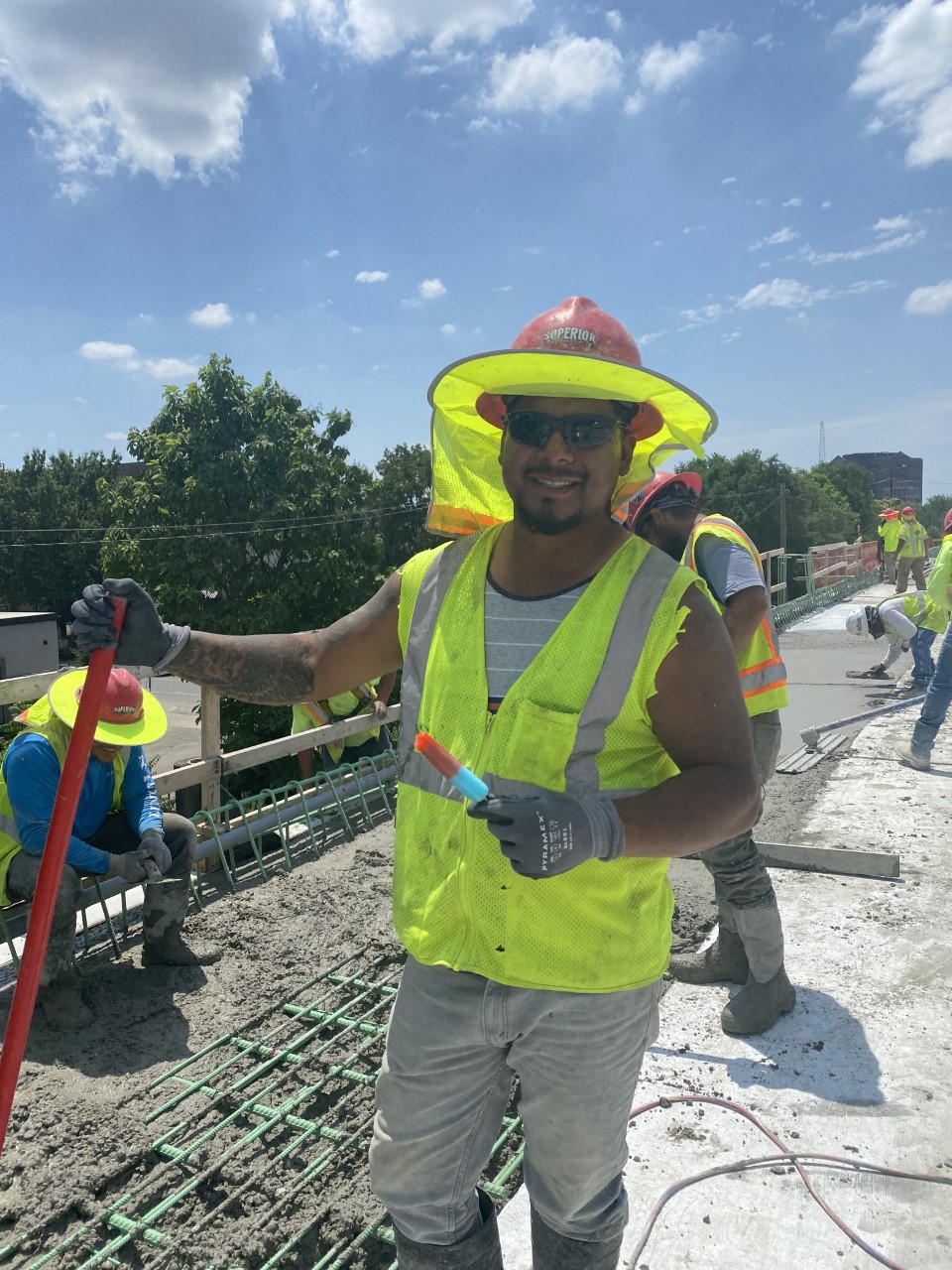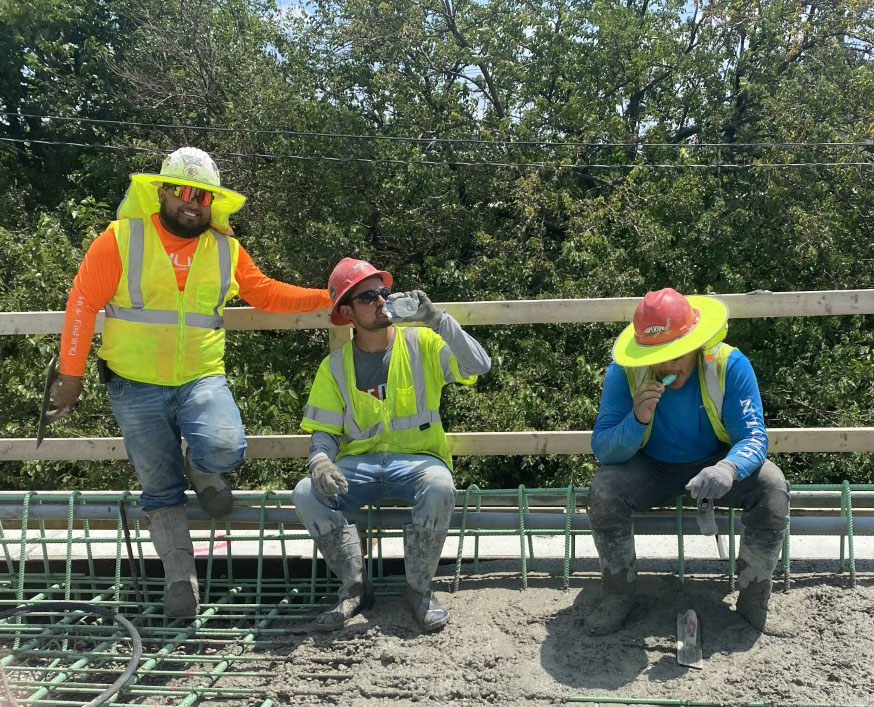Now that summer is here and temperatures continue to rise, it is important for the Superior Construction team to inform and protect North Split employees from heat-related illnesses. For the safety of the teams, crews have implemented precautionary measures and procedures to recognize, evaluate, and control heat-stress conditions resulting from weather and/or processes.
All hazards faced on site are protected through a method called the Hierarchy of Controls. The hierarchy of controls depicts different levels of protection. It begins with eliminating the hazard, followed by substituting a hazard for a hazard with less risk, then engineering controls, administrative controls, and the last line of defense is Personal Protective Equipment (PPE). Given the industry and scope of the work, heat-related hazards cannot be eliminated or substituted, so crews focus on engineering controls. Examples of engineering controls include:
- Ventilation and cooling using box fans, misting fans and air conditioning at the site of the work or ducted from a nearby location
- Opening all available windows and doors to increase ventilation
- Shade shelters
- Shields from hot process equipment
The next focus is administrative controls, which include:
- Changing shift start and end times to do work in the coolest part of the day.
- Rotating workers in and out of hot areas.
- Shutting down heat-producing process equipment.
- Considering the hazards of working under hot conditions as part of their hazard assessments (THA).
Lastly, crews utilize Personal Protective Equipment (PPE). Some examples of PPE include:
- Approved neck shades for hardhats
- Approved Sombrero-type hardhat attachments
- Circulating air hoods and suits
- Ice cooling garments
- Wetted clothing
Heat Exhaustion
Heat exhaustion is a serious condition that left untreated can lead to heatstroke, which can be life-threatening. If you suspect heat exhaustion, take these steps immediately:
- Move the person out of the heat and into a shady or air-conditioned place.
- Lay the person down and elevate the legs and feet slightly.
- Remove tight or heavy clothing.
- Have the person drink cool water or other nonalcoholic beverage without
caffeine. - Cool the person by spraying or sponging with cool water and fanning.
- Place ice packs or cool wet towels on the neck, armpits and groin.
Monitor the person carefully.
Call 911 or your local emergency number if the person’s condition deteriorates, especially if he or she experiences fainting, agitation, confusion, seizures, inability to drink, or rising core body temperature measured by a thermometer.
Superior Construction and INDOT are committed to the safety and protection of workers in any hazardous environment.
Read more about Superior Construction’s commitment to safety.


